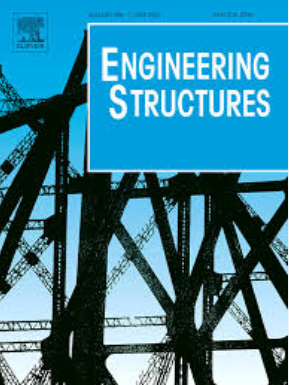利用织物增强胶凝基质(FRCM)预测加固梁的全载荷-挠度行为的机器学习方法
IF 5.6
1区 工程技术
Q1 ENGINEERING, CIVIL
引用次数: 0
摘要
结构工程中的机器学习(ML)方法通常用于预测单个值,例如失效载荷。本研究通过预测纤维增强胶凝基质(FRCM)加固矩形梁的荷载-挠度曲线上的五个临界点,提出了ML的先进应用。开发了三个独立的ML模型,每个模型都用于预测曲线上的特定关键点。ML模型考虑了诸如梁的力学和几何特性、钢筋和FRCM特性(如公称厚度、层数、结构类型和锚固存在)等变量。基于这些模型,开发了一个用户友好的应用程序。在本研究的第二部分,经过验证的有限元(FE)模型检查了ML模型对未知数据的鲁棒性。利用载荷能力、刚度和吸收能量三个参数对载荷-挠度曲线的精度进行了评价。结果表明,基于ml的模型有效地捕捉了frp加固梁的整体响应,其承载能力、刚度和吸收能量的RMSE分别为15 kN、6 kN/mm和2kN-m。本文章由计算机程序翻译,如有差异,请以英文原文为准。
A machine learning approach for predicting a full load-deflection behaviour of strengthened beams using fabric-reinforced cementitious matrix (FRCM)
Machine learning (ML) methods in structural engineering are typically applied to predict single values, such as failure load. This study presents an advanced application of ML by predicting five critical points on the load-deflection curve of fabric-reinforced cementitious matrix (FRCM)-strengthened rectangular beams. Three separate ML models were developed, each tailored to predict specific key points on the curve. The ML models consider variables such as mechanical and geometric properties of a beam, steel reinforcement, and the FRCM properties such as nominal thickness, number of layers, type of fabric and presence of anchorage. Based on these models, a user-friendly application was developed. In the second part of this study, validated Finite Element (FE) models examine the robustness of ML models on unseen data. The accuracy of the load-deflection curves is evaluated using three parameters: load capacity, stiffness, and absorbed energy. Results indicate that the proposed ML-based models effectively capture the entire response of FRCM-strengthened beams, achieving RMSE of 15 kN, 6 kN/mm, and 2kN-m for load capacity, stiffness, and absorbed energy, respectively.
求助全文
通过发布文献求助,成功后即可免费获取论文全文。
去求助
来源期刊

Engineering Structures
工程技术-工程:土木
CiteScore
10.20
自引率
14.50%
发文量
1385
审稿时长
67 days
期刊介绍:
Engineering Structures provides a forum for a broad blend of scientific and technical papers to reflect the evolving needs of the structural engineering and structural mechanics communities. Particularly welcome are contributions dealing with applications of structural engineering and mechanics principles in all areas of technology. The journal aspires to a broad and integrated coverage of the effects of dynamic loadings and of the modelling techniques whereby the structural response to these loadings may be computed.
The scope of Engineering Structures encompasses, but is not restricted to, the following areas: infrastructure engineering; earthquake engineering; structure-fluid-soil interaction; wind engineering; fire engineering; blast engineering; structural reliability/stability; life assessment/integrity; structural health monitoring; multi-hazard engineering; structural dynamics; optimization; expert systems; experimental modelling; performance-based design; multiscale analysis; value engineering.
Topics of interest include: tall buildings; innovative structures; environmentally responsive structures; bridges; stadiums; commercial and public buildings; transmission towers; television and telecommunication masts; foldable structures; cooling towers; plates and shells; suspension structures; protective structures; smart structures; nuclear reactors; dams; pressure vessels; pipelines; tunnels.
Engineering Structures also publishes review articles, short communications and discussions, book reviews, and a diary on international events related to any aspect of structural engineering.
 求助内容:
求助内容: 应助结果提醒方式:
应助结果提醒方式:


